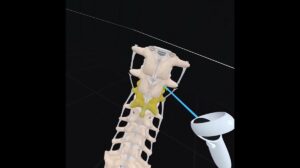NEW YORK (Reuters Health) – The selective inhibitor of Janus kinase (JAK) 1 and 2, ruxolitinib, significantly reduces spleen size and other debilitating symptoms in patients with myelofibrosis when compared with either placebo or the best available conventional therapy, according to two randomized trials reported in the New England Journal of Medicine for March 1.
Background information in the two papers points out that dysregulation of the JAK2 pathway is the central pathogenic component of the condition. Survival ranges from 2 to 11 years in patients diagnosed with myelofibrosis, and traditional therapeutic options, including spleen removal, have limited benefit.
Previous phase 1 and 2 trials have shown the oral agent ruxolitinib produced durable improvements.
Building on this, one of the RCT’s currently being reported randomly assigned 309 patients with intermediate-2 or high-risk myelofibrosis to twice-daily ruxolitinib or placebo.
The primary endpoint was a reduction in spleen volume of 35% or more at 24 weeks. This was achieved by 41.9% of the patients in the ruxolitinib group compared with 0.7% in the placebo group (p=0.001), the investigators found.
Dr. Srdan Verstovsek, at the M.D. Anderson Cancer Center in Houston, Texas, and colleagues also report that the total symptom score was reduced by 50% or better at 24 weeks in 45.9% of patients given ruxolitinib versus 5.3% of those who received placebo.
“Among patients who received ruxolitinib, anemia and thrombocytopenia were the most common adverse events, but they rarely led to discontinuation of the drug,” the team notes.
The second trial reported in the NEJM compared ruxolitinib to the best available therapy in 219 similar patients. Dr. Claire Harrison, with Guy’s Hospital, London, UK and colleagues set the primary endpoint as a 35% reduction in spleen volume at 48 weeks, which was achieved by 28% of patients given ruxolitinib compared to none in the best available therapy group.
“Patients in the ruxolitinib group had an improvement in overall quality-of-life measures and a reduction in symptoms associated with myelofibrosis,” they add.
In this trial, anemia and thrombocytopenia were also the most common hematologic abnormalities. One patient in each group discontinued treatment because of thrombocytopenia but none did so due to anemia, according to the report.
While noting the benefits, Dr. Harrison and colleagues conclude, “Further follow-up is needed to assess the long-term outcomes with respect to efficacy and safety.”
Source(s):
The New England Journal of Medicine, 2012;366:7879-807.




